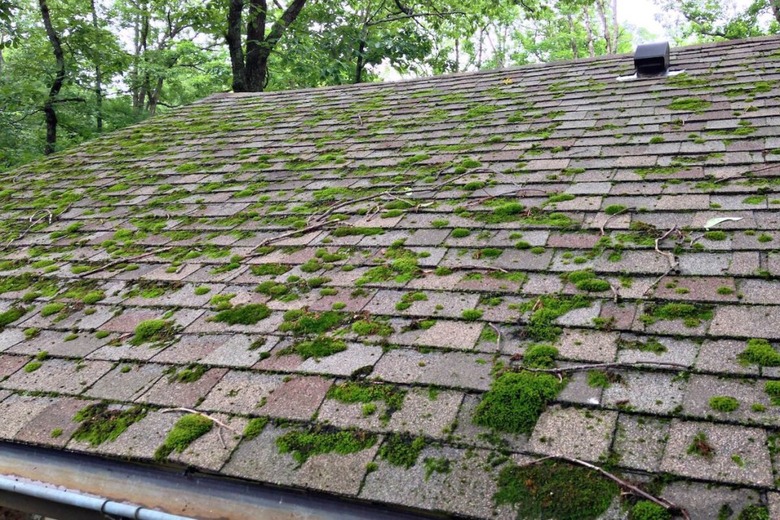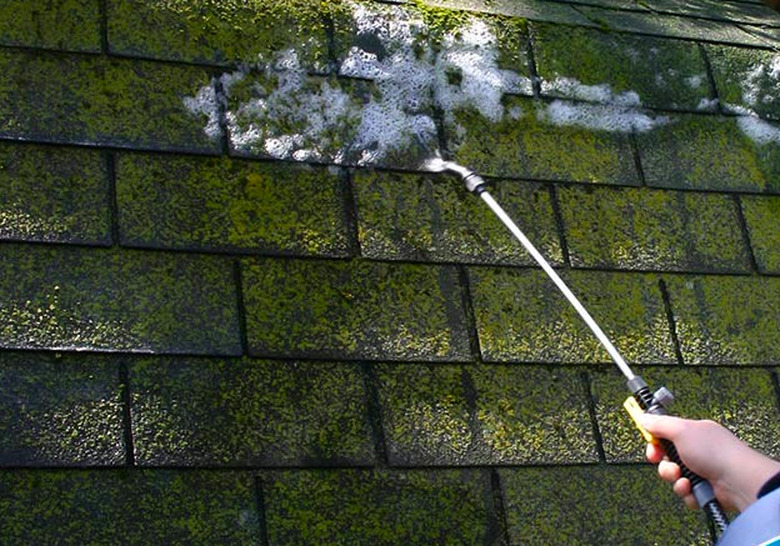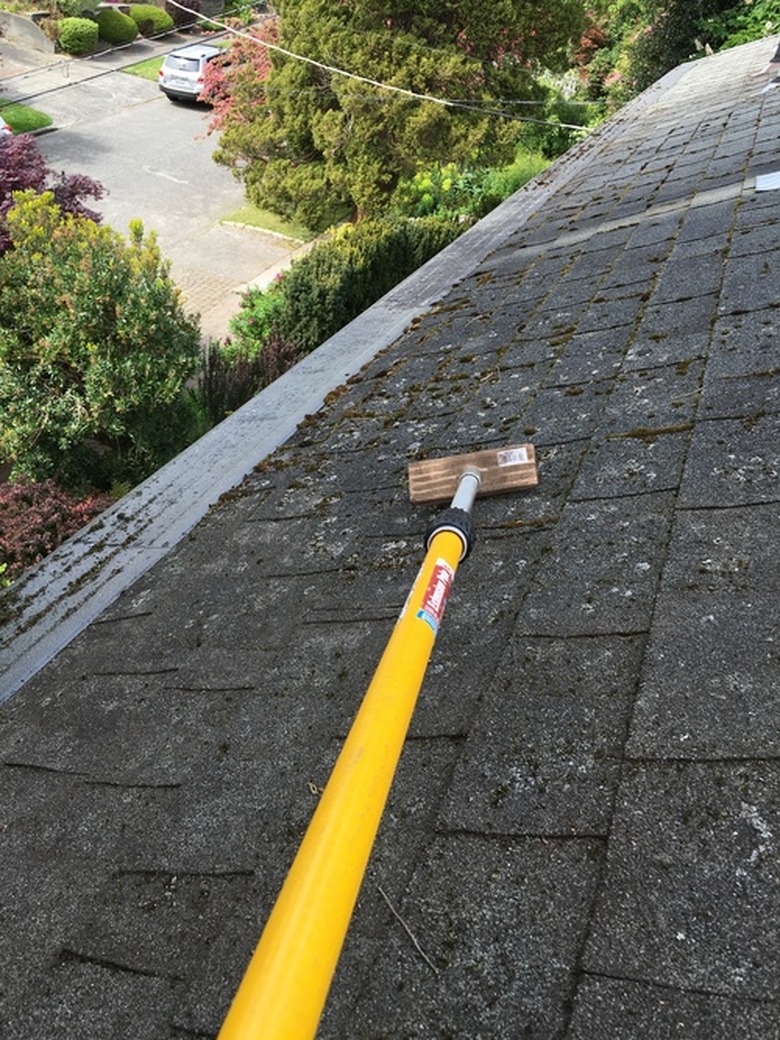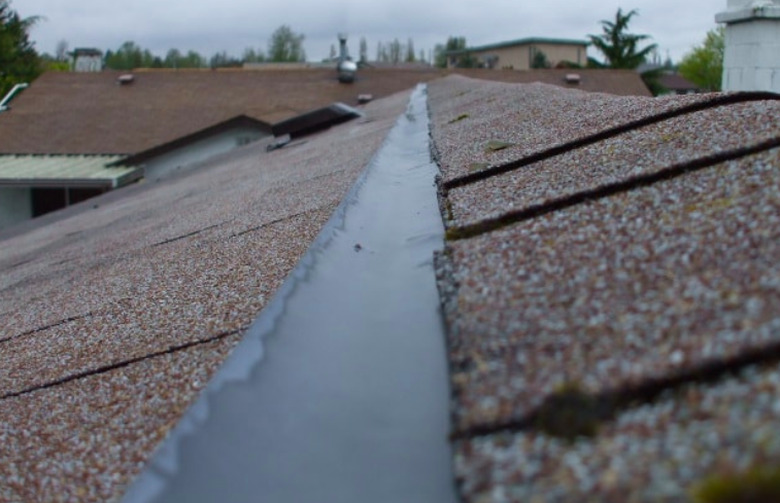How To Remove Moss From A Roof
Fuzzy green moss speckling your roof may lend a quaint appeal to your house and make you feel like you live in Hobbiton or the Shire, but it's not a good thing for the roof itself. While there's no evidence that moss feeds on roofing materials as some people fear, moss does lift shingles, making it possible for water to seep underneath them and rot the roof decking.
You can be sure there is moisture on the roof whenever you see moss, because the moss wouldn't be able to survive without it. Moss collects water through its greenery—not through roots, like other plants—and it transports the water under the shingles and to wherever else it's growing. Moss tends to grow on shady parts of a roof and it interferes with the ability of the roof to reflect sunlight. This can affect the interior climate of your home, and it contributes to roof deterioration.
You can kill moss with any number of commercial products or easy-to-mix home remedies. That's the easy part. The hard part is physically removing it from your roof. Moss clings tenaciously to whatever substrate on which it grows, and it continues to do so for a time even after you kill it. While the moss is still there, it can trap snow and water and create ice dams that are even worse for the roof than the moss itself.
Once you've gotten rid of the existing moss on your roof, you need to make sure that another colony doesn't get established. That's easier to do than you might think.
Start by Killing the Moss
Start by Killing the Moss
Moss may be hardy, but not hardy enough to stand up to bleach, vinegar or even dish soap. You can combine any of these common household supplies with water to make a spray that will prove lethal to roof moss. Start with 2 gallons of water and add any of the following ingredients:
- 8 ounces dish soap
- 1 pound oxygenated bleach
- 1 1/2 to 3 1/2 cups of liquid chlorine bleach or white vinegar.
Combine the mixture in a garden sprayer, and you're ready to go. Be careful when climbing on the roof, though. Roof work is best done when the shingles are dry, so use extreme care when spraying liquids on the moss. It's best to wear shoes with textured rubber soles, and to move very slowly and carefully. On a roof with a noticeable pitch, safety harnesses may be called for.
The moss needs to be wetted down with water first to ensure that the bleach/soap solution can soak into it. The easiest way to do this is to bring a garden hose onto the roof with you. Or you can use a sprayer with plain water to first moisten the moss, then refill it with the moss-killing solution.
Let the solution remain on the moss for 20 to 45 minutes, which should be long enough for the moss to die.
If you prefer to use a store-bought moss killer, you have your choice of several products, including Wet & Forget, Moss B Ware or Bayer 2-in-1 Moss and Algae Killer. Follow the directions on the container for the best use of any of these products. Some are designed to be rinsed off, while others must remain on the moss for an extended period to do their job.
Scrub the Moss from the Roof
Scrub the Moss from the Roof
After allowing the moss-killing solution to do its work, you must physically remove the moss. Use a scrub brush or push broom to do this, always moving the scrubber in a downward motion. If you scrub upward, you can break shingle, which can allow moisture to seep underneath them.
If you find that some of the moss is difficult, if not impossible to remove., don't worry too much about this. As long as you're able to remove the bulk of the moss, the rest will dry out and become easier to remove. And a lot of it will get washed off the roof by rain.
Power Washing?
Professional opinions vary on the use of a power washer to remove moss. Some experts caution against it because of the possibility of damaging the roof covering and forcing water underneath it. Others have no concerns about power washing. If you want to avoid scrubbing and like the idea of power washing, make sure to:
- Keep the pressure under 2,000 psi.
- Use a nozzle with at least a 15-degree fan spread.
- Always spray in the downward direction.
A power washer will make short work of your shingles if you spray toward the roof peak, so never do that.
After Removing Moss, Prevent Its Return
After Removing Moss, Prevent Its Return
You can prevent moss from growing back by periodically going on the roof and spraying a bleach solution, but there's an easier way: Install zinc strips near the peak or hip and at 15-foot intervals down the roof. Rainwater falling on the roof strikes the zinc and washes down over the rest of the roof, essentially inoculating the roof against moss. Why does this work? The zinc ions released by rainwater are poisonous to moss. Copper strips work even better, but they are more expensive.
Zinc roof flashing is available at any hardware store, and it's inexpensive, costing about $25 for a 50-foot roll. To be effective the flashing should go under the ridge cap or hip, or under the first row of shingles below it. The flashing has to be perfectly flat. If not, water may pool in certain areas and run off others, providing incomplete protection. Use roof sealant or self-sealing screws to attach it. Don't rely on nails, which tend to back out when the metal expands and contracts with changing temperature.
Zinc strips last about 5 years. Zinc gradually oxidizes, and once the strips are completely covered with zinc oxide, they will no longer work. That's a good reason to use easily removable screws to fasten zinc strips to the roof.



